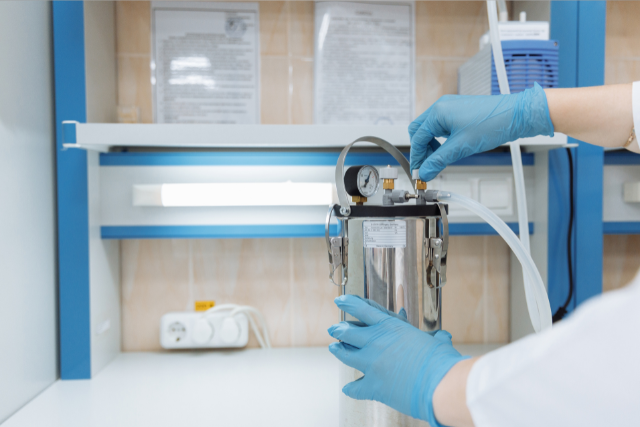في الصناعية اليوم, رعاية صحية, والبيئات المختبرية, precise control of air or gas flow is essential for safe and efficient operations. One key device that enables this level of control is the air click flowmeter.
While it may look simple at first glance, the air click flowmeter plays a critical role in ensuring consistency and safety across multiple applications, from oxygen therapy in hospitals to calibration in laboratory setups and air regulation in manufacturing lines.
في هذا بلوق, we’ll explore everything you need to know about air click flowmeters, what they are, كيف هؤلاء يعملون, where they’re used, and how to choose the right one for your specific needs.
What Is an Air Click Flowmeter?
An air click flowmeter is a device that measures and regulates the flow rate of air (or other gases) in a controlled system. The unique feature that sets it apart is its “click-adjust” mechanism, which allows the user to adjust the flow in fixed increments.
Each click represents a specific flow rate change, offering tactile and often audible feedback for more precise and repeatable control.
This makes air click flowmeters particularly valuable in environments where:
- Fine-tuned air delivery is required
- Visual monitoring may be limited
- Repeatable accuracy is crucial for performance
How Does an Air Click Flowmeter Work?
Air click flowmeters commonly operate on a variable area principle, where a float rises or falls inside a tapered vertical tube depending on the amount of airflow. When air enters the meter:
- It pushes a float upward.
- The position of the float corresponds to the flow rate.
- The click-adjustment knob or dial changes the size of the opening, allowing more or less air to flow through.
Each click of the knob makes a precise and consistent adjustment, reducing human error and ensuring reproducibility. This mechanism is beneficial in systems requiring fixed flow settings or frequent adjustments.
Where Are Air Click Flowmeters Used?
Air click flowmeters are highly versatile and used in a wide range of industries. Some of the most common applications include:
1. Healthcare and Medical Facilities
- Used in oxygen delivery systems for precise air-oxygen mixing
- Common in respiratory therapy and anesthesia machines
- Helps ensure patient safety through accurate gas flow control
2. Laboratories
- Used in gas chromatography, calibration setups, or controlled environments
- Ensures repeatable gas flow for experiments and sensitive procedures
3. Industrial and Manufacturing Processes
- Regulates compressed air for pneumatic tools or machinery
- Controls protective gas flow in welding and fabrication (مثلا, argon, CO₂)
- Used in cleanrooms and process control systems
4. HVAC and Environmental Testing
- Monitors and regulates airflow in ductwork
- Maintains stable environmental conditions in test chambers or buildings
Key Features and Benefits of Air Click Flowmeters
Here are some of the standout benefits that make air click flowmeters a preferred choice:
Precise Flow Control
The click mechanism allows for accurate adjustments, critical in sensitive applications like medical therapy or lab testing.
Repeatability
Users can return to an exact flow setting by counting the clicks, reducing variability and human error.
Tactile and Audible Feedback
The clicking sound and feel provide reassurance in noisy or low-visibility environments.
Durability
Most models are made from stainless steel or anodized aluminum, offering resistance to corrosion and long-term use.
Compact and Lightweight
Ideal for portable medical equipment or tight lab setups.
Factors to Consider Before Buying an Air Click Flowmeter
Choosing the right flowmeter depends on several key factors:
1. Flow Rate Range
Ensure the meter supports the minimum and maximum flow rates required for your system. فمثلا, some flowmeters may support flows as low as 0.1 LPM, while others can handle up to 50 LPM or more.
2. Gas Compatibility
While air click flowmeters are typically used for air, they can also be used with other gases like oxygen or nitrogen. Always verify compatibility with the gas type.
3. Material Quality
Look for corrosion-resistant materials such as:
- Stainless steel for durability
- Anodized aluminum for lightweight and strength
- Borosilicate glass in laboratory versions for chemical resistance
4. Connection Type
Check if the flowmeter has the right inlet/outlet fittings to match your system (مثلا, barbed hose fittings, NPT threads, إلخ).
5. Calibration and Accuracy
Pre-calibrated models are great for plug-and-play use. Some high-end flowmeters also allow for recalibration.
6. Mounting and Portability
Consider if you need a bench-top, wall-mounted, or portable version, depending on your workspace or equipment layout.
الكلمات الأخيرة
Though small and often overlooked, air click flowmeters are a critical tool in ensuring accurate air or gas delivery across a wide range of applications. Their precision, repeatability, and user-friendly design make them invaluable in environments where airflow control directly impacts outcomes.
By understanding how they work and what features to look for, you can confidently choose the best air click flowmeter for your needs—whether in a hospital room, lab bench, or factory floor.







